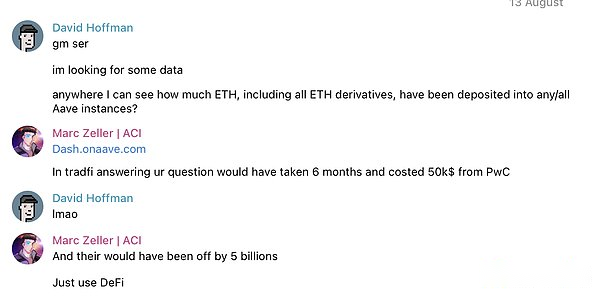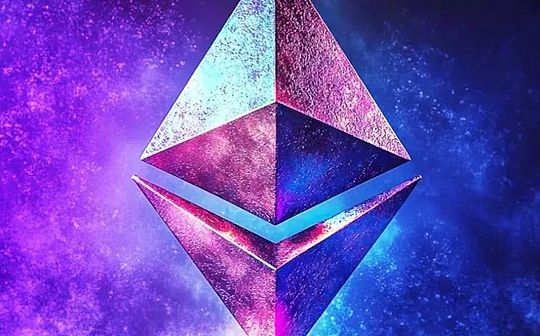
Author: David Hoffman, Source: Bankless, Compiled by: Shaw Bitchain Vision
The guiding light of Ethereum is open source.
The entire Ethereum project is defined and guided by the open source spirit.
The following is the general definition of open source:
Open source software refers to software whose source code is disclosed to the public and anyone can view, use, modify and share it under the terms of a specific license.It emphasizes transparency, collaboration and community-driven development, enabling developers and organizations to adapt code to their needs while also contributing to improvements to the wider community.Unlike proprietary software that restricts access and modification, open source software thrives on openness and shared innovation.
If you are in the Ethereum community, it is most likely because you think open source is crucial to the main path to cryptocurrencies.
After all, if we rebuild the financial system with proprietary, opaque and non-forkable code, thenDid we really rebuild something?
The open source financial system returns power to users.Users can “right-click and check the source code” to view their financial applications and see the full internal status of the applications they are interested in – a stark contrast to the opacity that led to the 2008 financial crisis, in which end users ultimately paid for the bailout.

When a single developer can fork and tweak the code, a cruel market is created where only the most powerful software can survive.The best projects will be reused, improved, and strengthened until they become the infrastructure of the open source ecosystem.
Open source software is full of vitality – it continues to evolve, adapt and integrate.
Like “Lego Money”, it is essentially combo.A single project itself may not be eye-catching, but as more complex software continues to accumulate, a larger emerging phenomenon gradually takes shape.The value of each application continues to superimpose with connections with other programs, forming a network in which each component reinforces the whole.
Open Source Project
I define human “open source projects” as a great collective experiment in building knowledge as code.It is a living organism maintained by millions of contributors across time and space, and what really matters compared to any single project is the shared infrastructure of the digital age – transparent, license-free and unlimited combination.Just like language or science, the more it is used, the stronger it becomes, forming a system of self-continuation, embodying the principle that open cooperation can achieve the best progress.
Before Ethereum, the open source software we owned existed independently.Each code snippet may use someone else’s snippet, but each deployment is an independent instance—a fleeting and incomplete manifestation of larger-scale collective open source projects.
With Ethereum, open source has a home.It provides an economic foundation for the cohesion and consolidation of open source value and provides the economic incentives needed to achieve this goal.
The Ethereum project caught my attention because it had the potential to create a unified, solid and enhanced open source software architecture.
Developers are exploring ways to deploy code on Ethereum and make it work.Other developers are looking for ways to overlay code onto predecessors.There are also some developers trying to solve technical or engineering problems so that more application scenarios on Ethereum can accommodate more code (such as Eigenlayer, Ethereum Layer2, etc.).
Team wins forever
When I was young, I loved riding a bicycle.I can keep my speeds of over 20 mph with my own strength and it makes me feel free.
In college, a friend and I would ride to Santa Monica from Orange, California and return.One day, as soon as we stepped on the bike path, we saw a group of about fifteen people passing by.We were in our early twenties and thought we were self-righteous, so I turned to my friend and said, “We are better than these guys.” We sprinted with all our might and really led for a while.But I couldn’t hold on after ten minutes.I rode alone in front of me in the wind.At this time, I heard a sound: “Left!” The group of people passed by us easily one by one.
I learned an important lesson that day: Teams always win.
 In the bicycle queue, no one is riding alone.When the leader feels tired, they retreat to the queue to enjoy the wind, while the energetic person will move forward against the wind.In the middle of the queue, air resistance can be reduced by 60% – you just need to ride with the flow and let the big force pull you forward.
In the bicycle queue, no one is riding alone.When the leader feels tired, they retreat to the queue to enjoy the wind, while the energetic person will move forward against the wind.In the middle of the queue, air resistance can be reduced by 60% – you just need to ride with the flow and let the big force pull you forward.
Moreover, the larger the array of vehicles, the more efficient the machine will be and the longer it will travel.
If you want to walk fast, go on your own.But if you want to walk a long way, go together.
Ethereum is the leader in open source financial software
Every Ethereum competitor has left the big force and started sprinting.This is common in cycling competitions and is also the core part of the winning strategy.Ultimately, you need to get out of the big force, accelerate with all your might, and cross the finish line.You can’t be number one if you stay in the big army.
When and how to decide to sprint with all your might depends on the individual, their physical condition and their level of preparation.
When applying this metaphor to the field of open source blockchain fintech, there is only one problem.
There is no finishing line.
The game is never ending.
The way to win is to assemble the largest team and effectively coordinate the leading riders.
This is why I am optimistic about Ethereum.
The foundation of Ethereum is naturally in line with the values of open source technology, which allows Ethereum teams to be used by the most people.The development of Ethereum has always adhered to the clear strategy of maximizing inclusion of more participants.Ethereum has easy-to-understand specifications, multiple clients written in multiple languages, multiple Layer2 network implementations for building, and virtual machines that are becoming the standard for Wall Street institutions.
Ethereum’s architecture continues to evolve with its contribution to its open source ecosystem.
ETH
ETH is a native asset of the open source upper structure of Ethereum. It is the circulating currency that runs through, guarantees and coordinates this global code cluster.
Every smart contract, every Layer-2 layer, and every application connected to Ethereum will eventually settle and return to ETH.ETH is both the fuel that drives the system to operate and the economic basis as collateral, something that open source software has never been seen before.
The traditional business school model has expired here.ETH is not “income”, not “equity”, and cannot be clearly covered by any income framework.ETH is the monetary basis of human open source financial organisms.Its value does not come from profit margins, but from the network effect brought by millions of people building, recreating and compounding open source code, thus forming a financial system with an overall value greater than the sum of each part.






